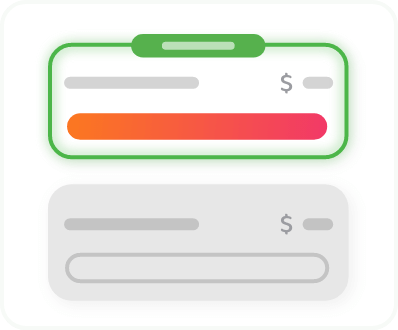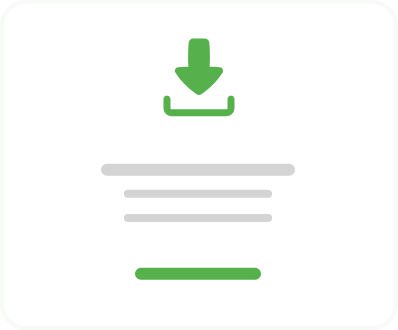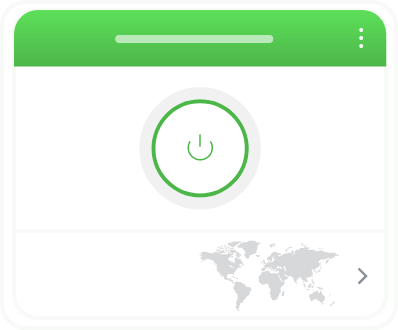นำการควบคุมกลับคืนมา
Private Internet Access: VPN ที่ดีที่สุดสำหรับความเป็นส่วนตัวทางดิจิทัล
- เข้าถึงเซิร์ฟเวอร์ทั่วโลกได้ไม่จำกัด
- ความเร็วที่ฉับไวสำหรับการสตรีม + การแชร์ไฟล์
- ผู้เชี่ยวชาญทางเทคนิคพร้อมให้ความช่วยเหลือตลอด 24 ชั่วโมงทุกวัน


ได้รับความไว้วางใจจากบริษัทต่าง ๆ รวมถึง:






รับประกันคืนเงินภายใน 30 วัน
การปกป้องความเป็นส่วนตัว
เราทุกคนต้องการความเป็นส่วนตัว โดยเฉพาะอย่างยิ่งทางออนไลน์ ที่อยู่ IP ของคุณและการท่องเว็บควรถูกซ่อนจากการเฝ้าระวังที่ไม่จำเป็น มั่นใจได้ว่าเครือข่ายส่วนตัวเสมือนของ PIA จะไม่เก็บบันทึกการใช้งานใด ๆ เลย


ข้อมูลปลอดภัย
เก็บข้อมูลของคุณโดยเข้ารหัสและปลอดภัย อย่าให้ใครมาจัดการกับข้อมูลของคุณ เช่น อีเมล รูปภาพ รายละเอียดธนาคาร หรือสิ่งอื่นใด เก็บพวกมันไว้เป็นส่วนตัวจะดีที่สุด
การเข้าถึงโดยสมบูรณ์
เข้าถึงเนื้อหาที่คุณชื่นชอบทั้งหมดได้ฟรีจากการควบคุมปริมาณของ ISP และข้อจำกัดด้านเครือข่ายที่น่ารำคาญ เพลิดเพลินกับแบนด์วิธไม่จำกัดเพื่อเชื่อมต่อ'กับรายการ แอป และเกมที่ดีที่สุดในโลก

ส่วนเสริมระดับพรีเมียมเพื่อความปลอดภัยเป็นพิเศษ

แอนตี้ไวรัสที่ให้ความสำคัญที่สุดกับความเป็นส่วนตัว
ซอฟต์แวร์ป้องกันไวรัสที่ล้ำสมัยของเราจะสแกนและลบมัลแวร์ออกจากพีซี Windows ของคุณ ทั้งหมดนี้โดยไม่ต้องติดตามกิจกรรมของผู้ใช้หรือบันทึกข้อมูลการเชื่อมต่อ ทำให้ PIA เป็นโปรแกรมป้องกันไวรัสเพียงตัวเดียวที่ให้คุณควบคุมข้อมูลและความเป็นส่วนตัวทางดิจิทัลได้อย่างเต็มที่

ที่อยู่ IP เฉพาะ
รับที่อยู่ IP เฉพาะซึ่งคุณเท่านั้นที่สามารถใช้ได้ สิ่งนี้ดีมากหากคุณต้องการประโยชน์ทั้งหมดของ VPN — เช่น การเข้าถึงเนื้อหาที่ถูกจำกัดและซ่อนกิจกรรมออนไลน์ — แต่จะมี CAPTCHA น้อยลงและมีเสถียรภาพมากขึ้นเมื่อทำสิ่งต่าง ๆ เช่น การธนาคารออนไลน์และการเล่นเกม
ได้รับความไว้วางใจจากลูกค้านับล้านที่พึงพอใจ
ต่อไปนี้คือตัวอย่างบางส่วนของรีวิวความประทับใจจากผู้ใช้ของเรา ดูรีวิว Trustpilot ทั้งหมดได้ที่นี่
{"tweetsBtnText":"{Tweets}","userBtnText":"{User Reviews}","influencersBtnText":"{Influencers}","techReviewsBtnText":"{Tech Reviews}"}
ความเป็นส่วนตัวในทุกอุปกรณ์ของคุณ
เข้าถึงอุปกรณ์ได้ไม่จำกัดพร้อมกันด้วยการสมัครสมาชิกเพียงครั้งเดียว

เครือข่ายเซิร์ฟเวอร์ทั่วโลกของ PIA ที่รวดเร็วดุจสายฟ้า
เซิร์ฟเวอร์ระดับโลกใน 91 ประเทศ

เลือกแผนที่เหมาะกับคุณ
3 ปี + 3 เดือนฟรี
$2.03/เดือนประหยัดถึง 83%
$466.05 $79 ต่อ 3 ปี
เรียกเก็บเงินทุก ๆ 3 ปี

จำนวนเงินทั้งหมดถูกแสดงในหน่วย USD และส่วนลดใด ๆ สะท้อนการลดลงจากราคาบริการรายเดือนปัจจุบันที่ $11.95 ต่อเดือน

เข้าถึงคุณสมบัติที่ล้ำสมัยล่าสุด

ไม่บันทึกข้อมูลการใช้
PIA ไม่เคยติดตาม บันทึก หรือจัดเก็บข้อมูลการใช้งานใด ๆ ความเป็นส่วนตัวของผู้ใช้คือหัวใจสำคัญของพันธกิจของเรา

โอเพ่นซอร์ส
เราเสนอความโปร่งใสอย่างสมบูรณ์ ทุกคนสามารถรวจสอบและปรับแต่งซอฟต์แวร์โอเพ่นซอร์สของเราได้

การอัปเดทที่ทันสมัย
Private Internet Access ใช้มาตรฐานการเข้ารหัสและโปรโตคอล VPN ล่าสุดและยิ่งใหญ่ที่สุด — เช่น WireGuard

ตั้งค่าทันที
เลือกแผนของคุณ ดาวน์โหลดแอป PIA VPN ยืนยันบัญชีของคุณ และได้รับการปกป้องเพียงแค่ในไม่กี่นาที

แบนด์วิดท์ที่ไม่จำกัด
ใช้ประโยชน์จากความเร็วอินเทอร์เน็ตที่ไม่ถูกควบคุมด้วยเครือข่ายเซิร์ฟเวอร์ที่กว้างขวางของเรา

บล็อกโฆษณา ตัวติดตาม และมัลแวร์
กำจัดโฆษณา เครื่องมือติดตามออนไลน์ และเว็บไซต์ที่เป็นอันตรายด้วยฟีเจอร์ “MACE” ของ PIA

ดาวน์โหลด VPN สำหรับอุปกรณ์ทั้งหมดของคุณตอนนี้!
ปกป้องอุปกรณ์ทั้งหมดของคุณด้วยบริการ VPN ที่ได้รับการจัดอันดับสูงสุดของ PIA เชื่อมต่อกับเซิร์ฟเวอร์ NextGen ใน 91 ประเทศและค้นพบความเร็วการเชื่อมต่อ VPN ที่รวดเร็ว
ติดตั้งแอป Windows และ Linux บนพีซีของคุณ หรือใช้แอป macOS สำหรับ Mac ของคุณ ดาวน์โหลดไฟล์ VPN .apk ของเราไปยังสมาร์ทโฟนและแท็บเล็ต Android ของคุณ หรือแอป iOS ของเราไปยังอุปกรณ์มือถือ Apple ของคุณ
เพื่อการท่องเว็บอย่างปลอดภัย ให้ตั้งค่าส่วนขยาย VPN ของเราสำหรับ Chrome, Firefox และ Opera หรือใช้คุณสมบัติ Smart DNS ของเราสำหรับสมาร์ททีวี เครื่องเล่นเกม และเราเตอร์

VPN คืออะไร?
คำจำกัดความของ VPN คือ เครือข่ายส่วนตัวเสมือน ความหมายก็คือบริการที่ให้การเชื่อมต่ออินเทอร์เน็ตที่ปลอดภัยและเข้ารหัส มันกลายเป็นเครื่องมือรักษาความปลอดภัยทางไซเบอร์ที่ได้รับความนิยมในช่วงไม่กี่ปีที่ผ่านมา เนื่องจากมีภัยคุกคามออนไลน์เพิ่มขึ้นบนเครือข่ายสาธารณะ
PIA VPN ปกป้องข้อมูลประจำตัวดิจิทัลของคุณโดยเปลี่ยนเส้นทางการรับส่งข้อมูลอินเทอร์เน็ตของคุณผ่านเซิร์ฟเวอร์ส่วนตัวและปลอดภัย เรามีเครือข่ายเซิร์ฟเวอร์ VPN ขั้นสูงทั่วโลกที่กว้างขวาง และเราใช้โปรโตคอล VPN ที่ดีที่สุดเพื่อเข้ารหัสข้อมูลส่วนบุคคลของคุณ


โครงสร้างพื้นฐานเซิร์ฟเวอร์ที่แข็งแกร่งของ'PIA
PIA VPN ใช้เฟรมเวิร์กแบบเปิดของสถาปัตยกรรมความปลอดภัย IP (IPSec) เพื่อเข้ารหัสและตรวจสอบความถูกต้องของข้อมูล มันเข้ารหัสข้อมูลขาออกและตรวจสอบความถูกต้องของข้อมูลขาเข้า ในทั้งสองกรณี ข้อมูลจะถูกถ่ายโอนผ่านเซิร์ฟเวอร์ที่ปลอดภัยระดับกลางที่จัดการการสื่อสารทั้งหมด นั่นเป็นเหตุผลว่าทำไมคุณภาพของเซิร์ฟเวอร์เหล่านี้จึงมีความสำคัญ
PIA มีเครือข่ายเซิร์ฟเวอร์ NextGen ซึ่งออกแบบและปรับให้เหมาะสมด้วยส่วนประกอบฮาร์ดแวร์ที่ดีที่สุด เซิร์ฟเวอร์ที่อยู่ร่วมของเรารับประกันว่าโครงสร้างพื้นฐานของเราไม่สามารถเข้าถึงได้โดยบุคคลที่สาม นอกจากนี้เรายังอัปเกรดเซิร์ฟเวอร์ของเราให้มีการ์ดเครือข่าย 10Gbps และอนุญาตความเร็วการเชื่อมต่อสูงสุด คุณสมบัติเหล่านี้ช่วยให้คุณได้รับการเชื่อมต่อที่ปลอดภัยและรวดเร็วที่สุด
VPN ทำงานอย่างไร?
VPN เปลี่ยนเส้นทางการรับส่งข้อมูลอินเทอร์เน็ตของคุณ เข้ารหัสข้อมูลของคุณ และปกปิด IP ของคุณ สิ่งนี้จะช่วยเพิ่มความปลอดภัยของคุณและเพิ่มการปกปิดตัวตนของคุณ
เมื่อคุณท่องเว็บออนไลน์ การรับส่งข้อมูลอินเทอร์เน็ตของคุณอาจถูกดักจับได้ ข้อมูลของคุณสามารถเข้าถึงได้โดย ISP ผู้ดูแลระบบเครือข่าย ตัววิเคราะห์แพ็คเก็ต และอื่น ๆ อีกมากมาย การเปลี่ยนเส้นทางการรับส่งข้อมูลของคุณผ่านเซิร์ฟเวอร์ระยะไกลจะสร้างเอฟเฟกต์ที่คล้ายกับทันเนล — อะไรก็ตามที่ผ่านทันเนลจะไม่สามารถมองเห็นได้โดยบุคคลที่สาม
การใช้เครือข่ายส่วนตัวช่วยให้คุณได้เปรียบโดยการใช้การเข้ารหัสคุณภาพสูง การเข้ารหัสข้อมูลของคุณช่วยรักษาความปลอดภัยข้อมูลส่วนตัวของคุณ


ฉันสามารถติดตามเมื่อเปิด VPN ได้หรือไม่?
กิจกรรมออนไลน์ของคุณไม่สามารถติดตามได้เมื่อคุณใช้ VPN ชั้นยอด เซิร์ฟเวอร์ VPN ของ PIA เปลี่ยนเส้นทางและเข้ารหัสการรับส่งข้อมูลอินเทอร์เน็ตของคุณและปกปิดที่อยู่ IP ของคุณแบบเรียลไทม์ ด้วยการใช้ PIA คุณสามารถมั่นใจได้ว่า ISP หน่วยงานภาครัฐ และอาชญากรไซเบอร์ไม่สามารถติดตามกิจกรรมออนไลน์ของคุณและระบุตำแหน่งของคุณได้
การปกปิดที่อยู่ IP ของคุณยังป้องกันไม่ให้เว็บไซต์และเครื่องมือติดตามระบุกิจกรรมออนไลน์ของคุณ ด้วยวิธีนี้ คุณจะอยู่ในโหมดไม่ระบุตัวตนและหลีกเลี่ยงการบล็อกเครือข่ายขณะเดินทาง VPN มีความสำคัญอย่างยิ่งต่อการปรับปรุงการปกปิดตัวตนและเสรีภาพทางออนไลน์ของคุณ
ประโยชน์ 6 ข้อของการใช้ VPN

เปลี่ยนตำแหน่งเสมือนของคุณ
เลือกตำแหน่งออนไลน์ของคุณโดยเชื่อมต่อกับเครือข่ายเซิร์ฟเวอร์ NextGen VPN ที่กว้างขวางของ PIA ครอบคลุม 91 ประเทศ รวมถึงใน 50 รัฐของสหรัฐอเมริกา

ปกป้องความเป็นส่วนตัวของคุณ
ปกปิดที่อยู่ IP ของคุณเพื่อปกป้องตัวตนออนไลน์ของคุณ หยุด ISP ของคุณไม่ให้คอยติดตามกิจกรรมออนไลน์ของคุณ เพลิดเพลินกับการท่องเว็บที่ปลอดภัยได้ทุกที่

เพลิดเพลินกับการรักษาความปลอดภัยทางดิจิทัลที่สมบูรณ์แบบ
ตรวจสอบให้แน่ใจว่า ISP และผู้ดูแลระบบเครือข่ายไม่สามารถจัดเก็บหรือขายข้อมูลของคุณได้ รักษาความปลอดภัยอุปกรณ์ทั้งหมดของคุณด้วย PIA เพลิดเพลินกับการเชื่อมต่อส่วนตัวบนทุกเครือข่าย

รับการป้องกัน Wi-Fi สาธารณะ
เครือข่ายสาธารณะก่อให้เกิดภัยคุกคามต่อความเป็นส่วนตัวของคุณ ติดตั้ง PIA บนอุปกรณ์ของคุณเพื่อป้องกันไม่ให้ผู้สอดแนมหรืออาชญากรไซเบอร์ขัดขวางการรับส่งข้อมูลของคุณ

การแชร์ไฟล์อย่างปลอดภัย
ปิดบังที่อยู่ IP ของคุณเมื่อคุณแชร์ไฟล์ออนไลน์ เชื่อมต่อกับ PIA และเข้ารหัสข้อมูลของคุณเมื่อคุณส่งหรือจัดการไฟล์ส่วนตัว

เดินทางไปต่างประเทศอย่างปลอดภัย
เมื่อคุณเดินทางออกนอกรัฐหรือต่างประเทศ คุณจะเห็นข้อจำกัดด้านเนื้อหาในท้องถิ่น เชื่อมต่อกับ PIA VPN เพื่อเข้าถึงแอปได้อย่างปลอดภัยจากที่บ้าน
VPN บนมือถือคืออะไร?
VPN บนมือถือช่วยให้คุณรักษาเซสชัน VPN ได้แม้ว่าคุณจะสลับระหว่างเครือข่ายต่าง ๆ เช่น ระหว่างเครือข่ายในบ้านกับผู้ให้บริการโทรศัพท์
PIA VPN มีฟังก์ชัน VPN บนมือถือ ซึ่งได้รับการปรับให้เหมาะสมเพื่อให้การเชื่อมต่อที่ราบรื่นบนอุปกรณ์ใดๆ ก็ตาม เรามีแอปที่ใช้งานง่ายสำหรับสมาร์ทโฟนและแท็บเล็ต ได้รับการปรับให้เหมาะสมด้วยคิลสวิตช์เพื่อปกป้องคุณจากการรั่วไหลของข้อมูลโดยไม่ตั้งใจ
รับ PIA VPN สำหรับอุปกรณ์มือถือทั้งหมดของคุณใน 3 ขั้นตอนง่าย ๆ:

ขั้นตอนที่ 1
ลงทะเบียนสำหรับ Private Internet Access

ขั้นตอนที่ 2
ดาวน์โหลดแอป PIA VPN

ขั้นตอนที่ 3
แตะที่ปุ่มเปิดปิดเพื่อเชื่อมต่อ

โอเพ่นซอร์ส VPN คืออะไร?
VPN แบบโอเพ่นซอร์สจะเผยแพร่ซอร์สโค้ดต่อสาธารณะเพื่อให้ใครก็ตามสามารถตรวจสอบได้ ด้วยแนวปฏิบัติที่โปร่งใส คุณสามารถบรรลุซอฟต์แวร์ที่มีความเสถียรและปลอดภัยได้ นั่นเป็นเหตุผลว่าทำไม VPN แบบโอเพ่นซอร์สจึงน่าเชื่อถือมากกว่ามาก
PIA เป็นที่รู้จักในฐานะหนึ่งใน VPN แบบโอเพ่นซอร์สที่ดีที่สุด ใคร ๆ ก็สามารถวิเคราะห์แอป VPN และโปรโตคอล VPN ของเราได้ และตรวจสอบขั้นตอนที่เราดำเนินการเพื่อให้แน่ใจว่ามีการเชื่อมต่อที่ปลอดภัยและราบรื่น นอกจากนี้เรายังใช้ WireGuard® และ OpenVPN ซึ่งเป็นโปรโตคอล VPN แบบโอเพ่นซอร์สที่ดีที่สุดสองโปรโตคอล
การเขียนโค้ดแบบโอเพ่นซอร์สยังช่วยปรับปรุงประสิทธิภาพและสร้างสรรค์สิ่งใหม่ ๆ เนื่องจากลักษณะการทำงานร่วมกัน การมีโค้ดโอเพ่นซอร์สช่วยให้สมาชิกชุมชนของ PIA สามารถส่งข้อเสนอแนะได้
วิธีเลือก VPN ที่ดีที่สุด
สำหรับตัวคุณเอง
ความเร็ว
ความเร็วที่ดีเป็นสิ่งสำคัญ เลือก VPN ที่มีเซิร์ฟเวอร์ที่รวดเร็วระดับแนวหน้าที่รองรับการสตรีมและการเล่นเกมได้อย่างราบรื่น PIA มีเซิร์ฟเวอร์ VPN ความเร็วสูงพิเศษ 10 Gbps เพื่อให้คุณเพลิดเพลินกับการสตรีมแบบไร้บัฟเฟอร์และการเล่นเกมออนไลน์แบบไร้ความล่าช้าบนอุปกรณ์ใด ๆ ก็ได้ ด้วยเครือข่าย VPN ทั่วโลกที่กว้างขวางของเรา คุณจะหลีกเลี่ยงความแออัดและความแออัดได้


ความปลอดภัย
เมื่อพูดถึงเรื่องความปลอดภัยออนไลน์ การเข้ารหัสที่มีคุณภาพถือเป็นสิ่งสำคัญ นั่นเป็นเหตุผลที่คุณควรเลือก VPN ที่ใช้โปรโตคอลการเข้ารหัสที่แข็งแกร่งที่สุด นี่เป็นวิธีเดียวที่จะทำให้แน่ใจว่า ISP ผู้ดูแลระบบเครือข่าย และหน่วยงานภาครัฐไม่สามารถเข้าถึงข้อมูลของคุณได้ PIA VPN เสนอการเข้ารหัสที่ทรงพลังที่สุดที่มีอยู่ — คุณสามารถเลือกได้ระหว่าง AES 128 บิตหรือการเข้ารหัสระดับทหาร AES 256 บิต
ความเป็นส่วนตัวของคุณ
คุณต้องการ VPN ที่จะปกป้องความเป็นส่วนตัวของคุณ PIA มีนโยบายไม่บันทึกข้อมูลที่เข้มงวด ได้รับการตรวจสอบในการตรวจสอบอิสระที่ดำเนินการโดยหนึ่งในบริษัท Big Four บริการที่ปราศจากบันทึกของเรา ได้รับการพิสูจน์สองครั้งในศาล คุณจะรู้สึกปลอดภัยเมื่อรู้ว่าเราเคารพและสนับสนุนสิทธิ์ความเป็นส่วนตัวของคุณ และเราจะไม่เก็บหรือจัดเก็บข้อมูลของคุณ


อุโมงค์เสมือนแบบแยก
คุณสมบัติ VPN ที่สำคัญนี้ช่วยให้คุณสร้างโปรโตคอลการเชื่อมต่อ VPN แบบกำหนดเองได้ ตัวอย่างเช่น หากคุณไม่ต้องการให้บริการธนาคารแจ้งว่ากิจกรรมของคุณเป็นการฉ้อโกง คุณไม่ควรเปลี่ยนที่อยู่ IP ต่อไป ตั้งกฎตามกรณีและปัญหาสำหรับแอปและเว็บไซต์เฉพาะได้อย่างง่ายดาย PIA VPN มีฟีเจอร์การแยกอุโมงค์ขั้นสูงที่ให้คุณสร้างการตั้งค่าอัตโนมัติและเลือกแอปและโดเมนที่จะหลีกเลี่ยงอุโมงค์ VPN ของคุณได้
โอเพ่นซอร์ส
เมื่อพูดถึง VPN โอเพ่นซอร์สมีความสำคัญอย่างยิ่งต่อความโปร่งใส โค้ดโอเพ่นซอร์สช่วยให้คุณได้ดูข้อมูลเบื้องต้นและดูว่า VPN ทำงานอย่างไรจริงๆ PIA VPN เป็น VPN โอเพ่นซอร์สที่ดีที่สุด คุณสามารถตรวจสอบซอร์สโค้ดของลูกค้าของเรา และดูขั้นตอนที่เราดำเนินการเพื่อรักษาความปลอดภัยการรับส่งข้อมูลและข้อมูลของคุณด้วยตนเอง


ขั้นสูง & การป้องกันที่สะดวก
หากคุณรู้สึกว่าต้องการการปกป้องเพิ่มเติม ให้มองหา VPN ที่มีคุณสมบัติมัลติฮอป ฟีเจอร์นี้เรียกอีกอย่างว่า VPN สองเท่า ช่วยให้คุณสามารถเชื่อมต่อการเชื่อมต่อของคุณผ่านเซิร์ฟเวอร์ VPN สองเครื่อง เพิ่มความเป็นนิรนาม และหลีกเลี่ยงการเซ็นเซอร์ ด้วยฟีเจอร์มัลติฮอปของ PIA คุณสามารถเปลี่ยนเส้นทางการรับส่งข้อมูลอินเทอร์เน็ตของคุณผ่าน VPN เฉพาะ RAM 2 ตัวที่เราออกแบบมาเพื่อป้องกันการเก็บข้อมูลและปกป้องรอยเท้าทางดิจิทัลของคุณ
ราคา
เมื่อพูดถึงความเป็นส่วนตัวและความปลอดภัยออนไลน์ของคุณ คุณคงไม่ต้องการที่จะยุติ เลือก VPN ที่น่าเชื่อถือและมีคุณภาพในราคาที่สมเหตุสมผล PIA VPN มีราคาไม่แพงและเชื่อถือได้ แผนของเรามอบความคุ้มค่าคุ้มราคาที่สุด สมัครสมาชิกเพียง ต่อเดือน ปราศจากความเสี่ยงโดยสิ้นเชิงด้วยการรับประกันคืนเงินภายใน 30 วันของเรา


VPNs ถูกกฎหมายหรือไม่?
ใช่ VPN นั้นถูกกฎหมายในประเทศส่วนใหญ่ทั่วโลก ในความเป็นจริง รัฐบาลส่วนใหญ่เข้าใจถึงความจำเป็นด้านความปลอดภัยของข้อมูลออนไลน์ที่ดีขึ้น และสนับสนุน VPN ในฐานะเครื่องมือรักษาความปลอดภัยผู้บริโภค บางประเทศไม่ได้รู้สึกเหมือนกัน และอนุญาตให้พลเมืองใช้เฉพาะ VPN ที่ได้รับการอนุมัติจากรัฐซึ่งสามารถมีความสามารถในการเฝ้าระวังได้
แม้ว่าผู้กำหนดนโยบายและบุคคลทั่วไปเริ่มเข้าใจถึงความสำคัญของความเป็นส่วนตัวออนไลน์มากขึ้น แต่อินเทอร์เน็ตก็ไม่ใช่สภาพแวดล้อมที่ปลอดภัยและเสรี คุณต้องมี VPN ที่มีคุณภาพเพื่อปกป้องตัวตนดิจิทัลของคุณ รักษาข้อมูลของคุณให้เป็นส่วนตัว และเพลิดเพลินกับอินเทอร์เน็ตฟรีและปลอดภัย
ฉันสามารถใช้ VPN ฟรีได้หรือไม่?
คุณสามารถใช้ VPN ฟรีได้ แต่ไม่แนะนำ VPN ฟรีส่วนใหญ่มีปัญหาทั่วไปบางประการที่เกี่ยวข้องกับคุณภาพและความปลอดภัย
VPN ฟรีส่วนใหญ่มีที่ตั้งเซิร์ฟเวอร์น้อยกว่าเนื่องจากการจำกัดงบประมาณ ซึ่งหมายความว่าเซิร์ฟเวอร์ของพวกเขามักจะหนาแน่นและช้า และอาจไม่มีเซิร์ฟเวอร์ในประเทศของคุณ
ปัญหาที่สองคือ VPN ฟรีส่วนใหญ่มีเซิร์ฟเวอร์รุ่นเก่า การใช้ฮาร์ดแวร์ที่ล้าสมัยอาจทำให้เกิดช่องโหว่ต่อการโจมตีทางไซเบอร์ และทำให้เกิดปัญหาการเชื่อมต่อ
VPN ฟรีส่วนใหญ่จะทำกำไรจากการขายข้อมูลผู้ใช้ แสดงโฆษณาในแอป หรือทั้งสองอย่าง นี่เป็นข้อกังวลหลักเนื่องจากเป้าหมายหลักของการใช้ VPN คือการปกป้องความเป็นส่วนตัวของคุณ..
หลีกเลี่ยงปัญหาเหล่านี้โดยลองใช้ VPN ที่ราคาไม่แพงและเชื่อถือได้ เช่น PIA เรามีเซิร์ฟเวอร์ NextGen ที่รวดเร็วเป็นพิเศษใน 91 ประเทศ เราใช้โปรโตคอล VPN ที่ดีที่สุดสำหรับการเข้ารหัส และเราปฏิบัติตามนโยบายปราศจากการบันทึกอย่างเข้มงวด
.png)
ต้องการทราบข้อมูลเพิ่มเติมใช่ไหม?
VPN เป็นเครื่องมือรักษาความปลอดภัยทางไซเบอร์ที่ช่วยให้คุณปกป้องข้อมูลประจำตัวและข้อมูลดิจิทัลของคุณ นอกจากนี้ยังมาพร้อมกับคุณประโยชน์อื่น ๆ อีกมากมาย เช่น ความเร็ว VPN ที่รวดเร็วเพื่อการท่องเว็บที่ราบรื่น การหลีกเลี่ยงการเชื่อมต่อที่ช้าลง การเข้าถึงเนื้อหาที่คุณชื่นชอบอย่างปลอดภัยขณะเดินทาง และการป้องกันการโจมตีทางไซเบอร์ เช่น DDoS และการโจมตีแบบแทรกกลาง
คุณปกปิดตัวตนโดยสมบูรณ์ด้วย VPN แต่คุณสามารถเพิ่มความเป็นนิรนามออนไลน์ของคุณด้วย VPN ชั้นยอด ด้วย PIA คุณสามารถเข้ารหัสการรับส่งข้อมูลออนไลน์และปกปิดที่อยู่ IP ของคุณเพื่อรับความเป็นส่วนตัวทางดิจิทัลกลับคืนมา ด้วยการซ่อนที่อยู่ IP ที่ไม่ซ้ำกัน คุณจะมั่นใจได้ว่า ISP และบุคคลที่สามอื่น ๆ จะไม่สามารถติดตามกิจกรรมของคุณกลับมาหาคุณได้
นโยบายปราศจากบันทึกหมายความว่า VPN ของคุณจะไม่รวบรวมหรือจัดเก็บข้อมูลของคุณ คุณอาจคิดว่านี่เป็นบริการที่เน้นความเป็นส่วนตัว แต่น่าเสียดายที่มันไม่ใช่ บริการบางอย่างสร้างรายได้โดยการเก็บบันทึกของผู้ใช้และขายข้อมูล หากคุณต้องการเพลิดเพลินกับประสบการณ์อินเทอร์เน็ตที่เป็นส่วนตัวอย่างแท้จริง คุณต้องมี VPN ที่มีนโยบายไม่บันทึกข้อมูลที่เข้มงวด เช่น PIA
VPN ระดับสูงจะไม่ทำให้การเชื่อมต่ออินเทอร์เน็ตของคุณช้าลง มันยังสามารถปรับปรุงความเร็วของคุณได้เมื่อ ISP ของคุณควบคุมปริมาณการเชื่อมต่อของคุณระหว่างการสตรีมหรือเล่นเกมออนไลน์ ตัวอย่างเช่น PIA มีเซิร์ฟเวอร์ที่รวดเร็วเป็นพิเศษ และใช้โปรโตคอล VPN ที่มีประสิทธิภาพสูงสุด ซึ่งหมายความว่าคุณสามารถเพลิดเพลินกับโลกออนไลน์ได้เต็มความเร็ว โดยไม่กระตุกหรือค้างอีกต่อไป
คุณสามารถใช้งาน VPN ได้ตลอดเวลาทุกวันตราบใดที่คุณมี VPN ที่ไม่มีการจำกัดแบนด์วิดท์ VPN ส่วนใหญ่มีข้อจำกัดแบนด์วิธ แต่ PIA ไม่มี ใช้ PIA เพื่อปกปิดกิจกรรมออนไลน์ของคุณ และหลีกเลี่ยงการควบคุมปริมาณแบนด์วิธตามเนื้อหาของ ISP สตรีม เล่นเกม หรือท่องเว็บแบบส่วนตัวได้มากเท่าที่'คุณต้องการ
คุณสามารถตั้งค่า VPN บนอุปกรณ์ใดก็ได้หากคุณมีแอป VPN ที่เหมาะสม PIA มีแอป VPN พื้นฐานสำหรับระบบปฏิบัติการหลักทั้งหมด — macOS, Windows, Linux, Apple iOS และ Android คุณยังสามารถใช้ PIA บนอุปกรณ์ในบ้านของคุณ เช่น เราเตอร์และสมาร์ททีวี ทั้งหมดนี้ติดตั้งและใช้งานได้ง่าย ด้วยการสมัครสมาชิก PIA เพียง 1 ครั้ง คุณสามารถปกป้องอุปกรณ์ได้ไม่จำกัดจำนวนพร้อมกัน
ราคา VPN จะแตกต่างกันไปตามแบรนด์และแผนต่าง ๆ — บางตัวฟรีและบางตัวก็แพงมาก แต่มีเพียงไม่กี่ตัวเท่านั้นที่ทั้งราคาสมเหตุสมผลและน่าเชื่อถือ PIA VPN เป็นตัวเลือกที่เหมาะสมและเชื่อถือได้ สมัครรับข้อเสนอของเราในราคาเพียง ต่อเดือน และเพลิดเพลินกับสิทธิประโยชน์การรับประกันคืนเงินภายใน 30 วัน
ดาวน์โหลดส่วนขยาย Chrome VPN ของเราเพื่อเพลิดเพลินกับการปกป้องออนไลน์บน Chromebook ของคุณที่โรงเรียนหรือที่อื่น ๆ ติดตั้งง่าย รวมถึงการเข้าถึงตัวบล็อกโฆษณา PIA MACE และทำงานได้อย่างราบรื่นบน ChromeOS ของคุณ คุณยังสามารถตั้งค่า PIA Smart DNS บน Chromebook ของคุณได้ — ค้นหาในพอร์ทัลการสนับสนุนของเราเพื่อดูคำแนะนำทีละขั้นตอน
ยังไม่มั่นใจใช่ไหม? ดาวน์โหลด PIA โดยปราศจากความเสี่ยง
คุณได้รับการคุ้มครองโดยการรับประกันคืนเงินภายใน 30 วันของเรา หากคุณไม่พอใจ คุณจะได้รับเงินคืน

